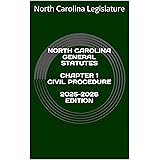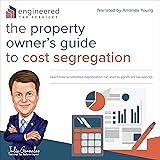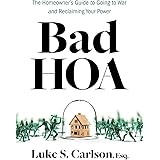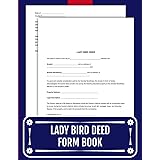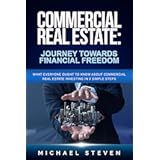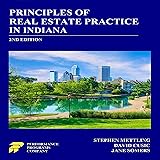Successfully flipping a house hinges on a meticulous, comprehensive analysis of every single detail, from structural integrity to the often-overlooked financial intricacies. As demonstrated in the video above, diving into a real-world example provides invaluable insights beyond theoretical concepts. Understanding the true costs and potential pitfalls is the cornerstone of profitable real estate investing, particularly when engaging in house flips. This guide expands on the critical components highlighted in the video, ensuring you’re equipped to analyze your next deal with precision and confidence.
Understanding the House Flip Landscape
The term “house flip” often conjures images of extensive renovations and dramatic transformations, but the reality is more nuanced. As the video explains, there’s a significant difference between a “wholesale” and a “whole-tail” deal. A wholesale transaction involves securing a property under contract and then assigning that contract to another investor before you ever close on it yourself, essentially profiting from the spread without taking ownership or doing any rehab. This strategy prioritizes speed and minimal capital input, appealing to those seeking quick, lower-risk returns.
1. In contrast, a “whole-tail” deal, like the one featured in the video, involves purchasing the property, conducting a light rehab, and then reselling it. This approach allows for a greater profit margin by enhancing the property’s value, but it also introduces more risk and capital requirements. Imagine if you found a property for $100,000, but it needed $15,000 in minor repairs like paint and flooring. A whole-tail strategy would involve executing these repairs, pushing the after-repair value (ARV) to $155,000, and capturing the increased equity.
The Critical Initial Assessment: Beyond Surface Level
Before any hammer swings, an in-depth property inspection is paramount. The video highlights several crucial areas that can significantly impact your budget and timeline. Neglecting these details during your initial house flip analysis can lead to devastating profit erosion.
Foundation and Structural Integrity
In regions like Oklahoma, with its clay soil, foundation issues are a common and costly concern. When evaluating a property for a potential flip, you must diligently inspect the exterior for signs of settling. Look closely at the mortar joints on brick homes; any noticeable separation or cracks, especially wide gaps where you could insert a finger, should immediately raise a red flag. While hairline cracks, like the one observed in the video, might not always indicate major structural problems, they warrant cautious consideration. Getting a structural engineer or a trusted foundation company to provide an expert opinion can save you thousands of dollars down the line.
2. A home’s stem wall, which supports the structure above the foundation, also demands scrutiny. Even properties on a slab will have some form of a stem wall, and large cracks here can signal underlying issues. Without proper gutters, rainwater can erode the soil unevenly around the foundation, causing shifting over time. Imagine if you skipped this step and discovered a major foundation issue post-purchase; what you thought was a $25,000 profit could quickly dwindle, with potential repair costs ranging from a few thousand dollars for minor adjustments to tens of thousands for significant structural work.
The Unseen but Costly: Sewer Lines
Sewer lines represent another critical, often overlooked, component of a house flip analysis. The video stresses the importance of having the sewer line scoped, a service that utilizes a camera to inspect the interior of the pipes. This step is particularly vital in older homes or properties surrounded by mature trees, where root intrusion can cause blockages and damage. If you’re flipping a house in a rural area, you will likely encounter septic tanks instead of city sewer connections, which require a different set of inspections and can be equally, if not more, expensive to repair or replace if faulty. A plumber confirmed no issues with the sewer line in the video’s featured flip, preventing a potential $10,000 profit reduction.
3. Identifying and addressing these potential “deal-breakers” early in the process is essential. A damaged sewer line or a failing septic system can unexpectedly add several thousand dollars to your rehab budget, significantly impacting your profit margin. Skipping a sewer scope could result in unforeseen expenses, easily turning a projected $25,000 profit into a mere $15,000 or less.
Window Wisdom: Balancing Cost and Value
Windows often present a significant dilemma for flippers: replace for energy efficiency and curb appeal, or keep to save costs? The video offers practical guidance based on the property’s anticipated sale price. For homes targeting the lower-end market (under $150,000-$175,000), retaining existing aluminum windows might be acceptable, even if they aren’t ideal for insulation. Aluminum windows, while not top-tier, generally function adequately and don’t typically “go bad” in the same way wood windows might.
4. Wood windows, however, usually require replacement due to poor insulation, chipping, and functionality issues. The gold standard for flips, particularly in mid-range to higher price points, is vinyl windows, known for their insulation properties and durability. Vinyl windows typically cost $150 to $350 per unit, with installation adding another $150 to $200 per window, including any necessary framing. When analyzing a house flip, you must weigh the insulation benefits and aesthetic upgrade against these substantial costs, always keeping your target buyer and market value in mind.
Strategic Renovation: Maximizing ROI for House Flips
The rehab phase of flipping houses is where you create value, but it must be strategic and aligned with your target market. The video demonstrates how thoughtful material choices and design elements can maximize buyer appeal without overspending.
Kitchen & Bathroom: The Heart of the Sale
Kitchens and bathrooms are consistently the biggest selling points in any home. For the flip shown, the investor focused on making these areas “slick” for a first-time homebuyer demographic. While original 12×12 tiles were kept in the kitchen due to the property’s price point ($150,000), a full gut would be mandatory for a $250,000 home. This decision saved approximately $750 in demolition costs and labor, proving that not every element needs a complete overhaul.
5. Cabinetry, even if original, can be upgraded with new hardware. The investor deliberately chose gold hardware instead of common brushed nickel or black. This unique choice differentiates the property from competitors, making it feel more upscale for an entry-level product. A backsplash is another crucial addition; even a simple subway tile, costing under $1,000 for materials and labor, provides a significant perceived value upgrade. Butcher block countertops, costing less than granite (which would have been $400-$500 more), offer a stylish, warm aesthetic perfect for owner-occupants who appreciate its look and are willing to perform minor maintenance. However, this material would be a poor choice for a rental property due to its higher maintenance requirements.
Flooring Choices that Elevate (or Detract)
Flooring is a major component of any renovation budget. Luxury Vinyl Plank (LVP), specifically the free-floating variety, is a favored choice for its durability and ease of installation. Unlike glue-down LVP, which often appears shiny and can be cheaper at around $0.70 per square foot, free-floating LVP costs about $1.50 per square foot and offers a more premium look. The video stresses using lighter colors in smaller spaces to make rooms feel more open and airy, advising against dark or gray tones that can make areas feel cramped.
6. An often-forgotten finishing touch is quarter-round. Because free-floating LVP expands and contracts with temperature changes, it requires a small gap around the perimeter of the room. Quarter-round trim covers this necessary gap, providing a polished and professional appearance. Failing to install quarter-round can leave visible, unsightly gaps, diminishing the overall quality of your house flip. This small detail, often overlooked by less experienced flippers, significantly elevates the perceived quality of the renovation.
The Unexpected Renovation Savings
Sometimes, a property comes with pleasant surprises. In the video’s featured flip, one bathroom was already remodeled, saving an estimated $4,000. Such unexpected savings can significantly boost your overall profit margin or provide a buffer for unforeseen expenses. It highlights the importance of detailed walk-throughs to identify existing upgrades and integrate them into your renovation plan. However, even with existing upgrades, vigilance is key. The investor noticed an incorrect LVP glue-down section in the primary bedroom’s bathroom, planning to have it removed and replaced with the matching free-floating LVP to ensure consistency, even if it means pulling the toilet temporarily. This attention to detail ensures a cohesive and high-quality final product for your house flip.
7. Even with diligent contractors, ongoing project oversight is crucial. The investor recounted finding orange foam around a window that needed quarter-round for a finished look. This illustrates that contractors may not address every aesthetic detail unless explicitly instructed. Regular site visits and a clear scope of work are essential to maintain quality control and ensure your vision for the house flip is executed flawlessly, preventing minor issues from detracting from the overall appeal.
Unpacking the Numbers: The Real Costs of Flipping Houses
The biggest mistake aspiring house flippers make is underestimating the true financial outlay. The spread between purchase price and sales price is never pure profit. The video provides a transparent breakdown of the many costs that eat into your profit.
Buy-Side Closing Costs: The First Hit to Your Capital
When you acquire a property for a house flip, several costs immediately reduce your available capital. These “buy-side closing costs” include fees for inspections (typically $300-$500), title company fees (which cover services like abstracting and title insurance), and lender fees. Abstracting involves bringing the property’s abstract up to date, ensuring a clear chain of ownership, and usually costs between $600-$1,000 for properties under $150,000. Title insurance is a one-time fee that protects you against future claims on the property’s title, a crucial safeguard that once saved the investor from a fraudulent sale.
8. Lender fees typically include an origination fee, which is the percentage you pay the bank for processing the loan. While typical origination fees range from 1% to 3% of the loan amount, the investor in the video secured a favorable rate of half a point ($500) due to a strong relationship with their bank. Additionally, expect doc prep fees and other administrative charges. On the $100,000 purchase price of the featured property, the investor came out of pocket $10,665.23, which included these buy-side closing costs and the initial equity contribution.
Holding Costs: Time is Money
Once you own the property, the clock starts ticking, and every day incurs “holding costs.” These are the recurring expenses you pay until the property is sold. They primarily consist of interest payments on your loan, property taxes, insurance, utilities (gas, electricity, water), and property maintenance, such as mowing, especially during peak seasons. For a $100,000 property, holding costs can easily range from $1,000 to $1,200 per month. If you fail to account for these, your projected profit margin for the house flip can significantly shrink. Accelerating the renovation and sale timeline is paramount to minimizing these costs and maximizing profitability.
9. Imagine if a project takes an extra two months to complete due to unforeseen delays; those two months could add an additional $2,000-$2,400 in holding costs alone. This direct impact on profitability underscores why efficiency and a clear timeline are critical for any successful house flip. The video’s investor aimed for a 60-70 day turnaround to keep these expenses in check.
Rehab Costs: Beyond the Initial Estimate
Most people immediately think of rehab costs when considering a house flip, but even experienced investors miss things. The video’s investor estimates $15,000 for this project but acknowledges that a 10% contingency margin is essential. This buffer accounts for unexpected issues found during demolition, unforeseen repairs, or miscalculations. For instance, if a roof inspection reveals it’s “shot” and requires a full replacement, that’s an immediate $7,000 expense that would wipe out a significant portion of your profit if not budgeted for or caught during due diligence.
10. Securing a reliable contractor is also paramount. New investors should leverage local real estate Facebook groups or networking events to find trusted professionals who can accurately estimate repair costs before you commit to buying the property. Having a contractor walk through the property with you can provide realistic estimates, preventing budget overruns and ensuring a more accurate house flip analysis.
Sell-Side Closing Costs: The Final Deduction
Just as there are costs to buy, there are costs to sell. These “sell-side closing costs” include commissions for the buyer’s agent (typically 2.5-3% of the sale price) and additional title company fees. If you’re not a licensed real estate agent, you’ll also need to factor in your listing agent’s commission. Moreover, once a buyer is under contract, they’ll conduct inspections, which often lead to requests for repairs. If your initial inspections overlooked major mechanicals like the roof or HVAC, these buyer-requested repairs could easily erode your profit. The video highlights how the initial goal for this house flip was a $25,000 profit, which is calculated after all these buy-side, holding, and sell-side costs are factored in.
Mitigating Risks and Maximizing Profit in House Flipping
A successful house flip analysis isn’t just about identifying costs; it’s about strategizing to mitigate risks and ensure substantial returns. This involves solid underwriting, market knowledge, and clear contingency plans.
Strategic Underwriting and Valuation
A powerful formula for underwriting a house flip deal is the 70% Rule: After Repair Value (ARV) multiplied by 70%, minus your estimated repairs, holding costs, and closing costs, to determine your maximum offer price. For example, if a house has an ARV of $155,000, your calculation would be ($155,000 * 0.70) – $15,000 (rehab) – $3,000 (holding) – $7,000 (closing costs) = $83,500. This method provides a disciplined approach to offering a price that allows for a healthy profit margin. The investor aims for at least a 20% net profit per deal and a minimum $15,000-$20,000 profit to justify the effort and risk, alongside a target of 100% cash-on-cash return, as demonstrated by the featured property’s estimated 250% return.
11. The profit margin is crucial because unforeseen issues can quickly surface. If you’re only targeting a $5,000 profit, a single major repair can turn your gain into a loss. Having a robust margin allows you to absorb these unexpected expenses without jeopardizing the entire house flip. This emphasis on a substantial safety net prevents a single setback from derailing your investing career.
The Importance of Market Knowledge & Relationships
Thorough market knowledge is indispensable for any house flip. You must understand local price points, buyer demand, and common property issues specific to your area. For instance, knowing that Oklahoma is prone to foundation issues allows you to prioritize that inspection. Building strong relationships with local real estate agents is also vital, as they can provide accurate comparable sales (comps) to determine your ARV. Tools like PropStream, BatchLeads, and even Zillow can assist in running your own comps and verifying agent estimates, ensuring you are confident in your projected sale price. These resources empower you to independently confirm valuations, safeguarding your investment.
12. Without solid market knowledge and a reliable network, you risk buying overpriced deals from wholesalers who inflate numbers, a trap that led one investor to lose a significant amount of money in the featured investor’s experience. This highlights the dangers of entering a new market without doing your own due diligence and building local connections. Your network of trusted professionals, including realtors and contractors, forms the backbone of successful house flip endeavors.
Exit Strategies and Contingency Planning
Every successful house flip needs a “Plan B.” For smaller, more affordable properties like the one in the video, a worst-case scenario might involve renting out the property if it doesn’t sell quickly or for the desired price. This strategy minimizes losses, as you can generate rental income rather than taking a significant hit on a sale. The ability to pivot to a rental strategy provides a crucial safety net, especially on lower-priced homes where the downside risk is more manageable. Having a clear alternative use for the property ensures you can always recover your investment, even if the flip doesn’t go exactly as planned.
13. Furthermore, understanding loan types is critical for your exit strategy. The FHA 90-Day Flip Rule, for instance, prevents you from selling a property to an FHA buyer within 90 days of purchasing it. Since FHA loans are a common financing option for first-time homebuyers, especially in lower-to-mid price points, this rule can significantly impact your marketing and holding period. Planning for this rule ensures you don’t inadvertently limit your buyer pool or face unexpected delays in your house flip, which would increase your holding costs.



